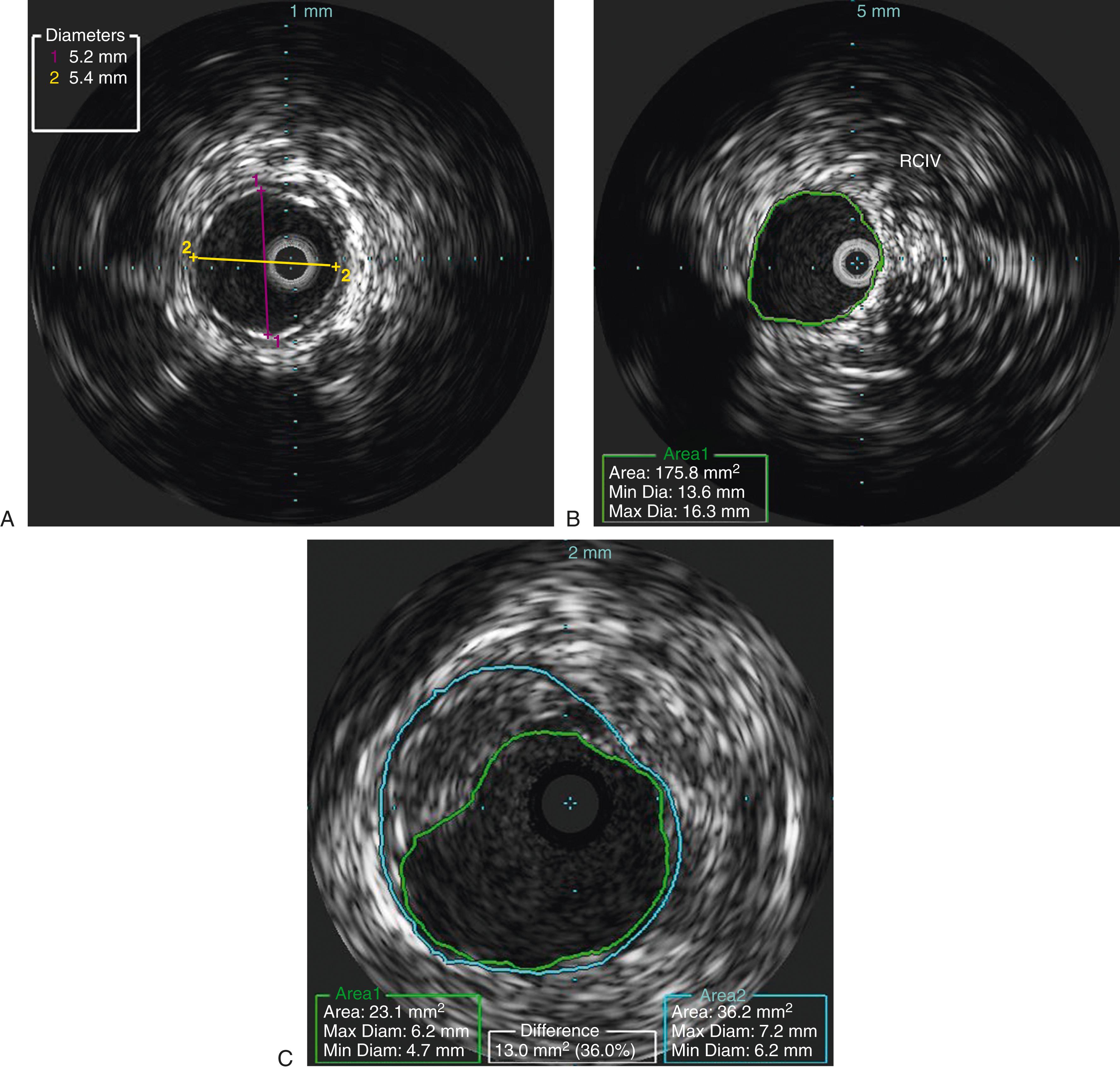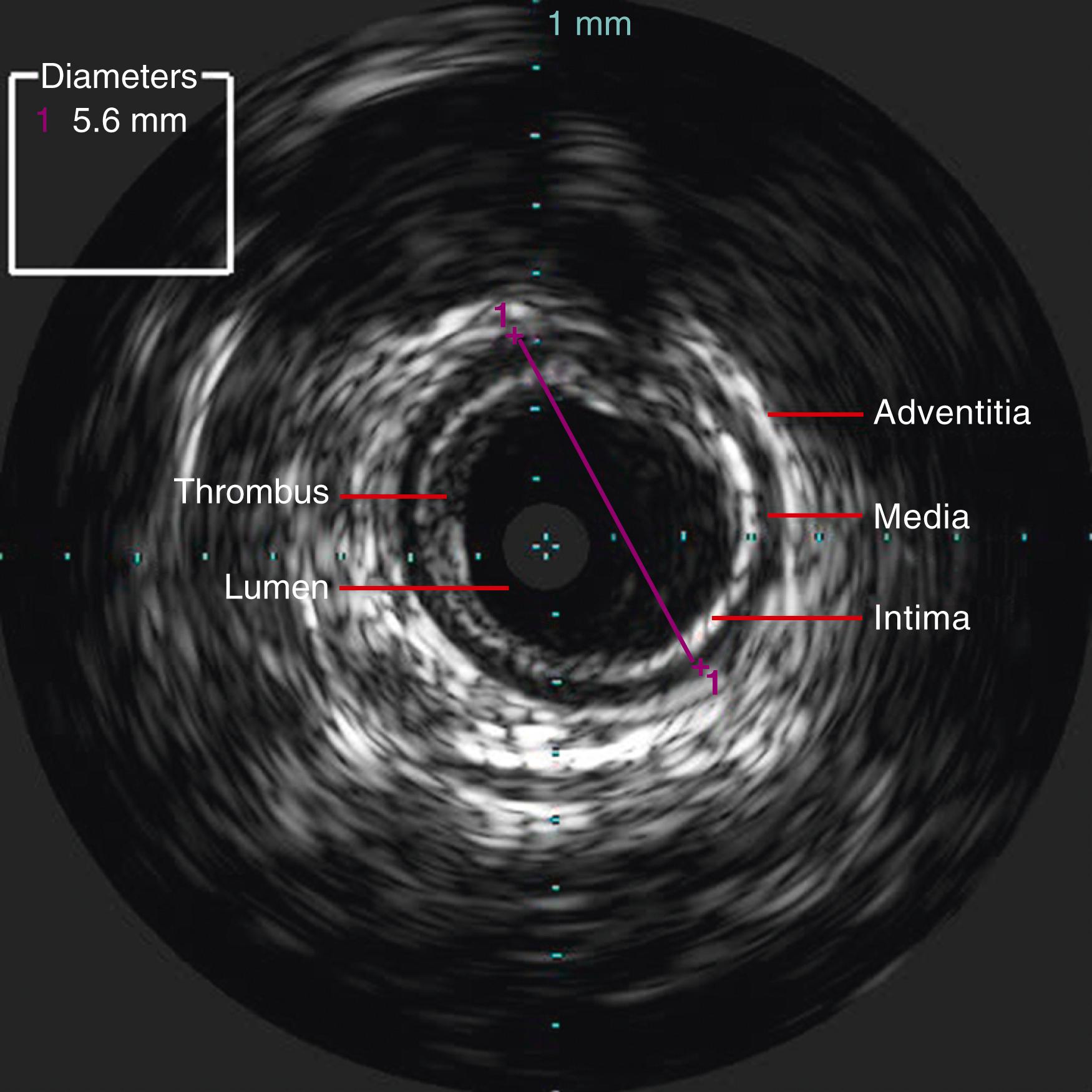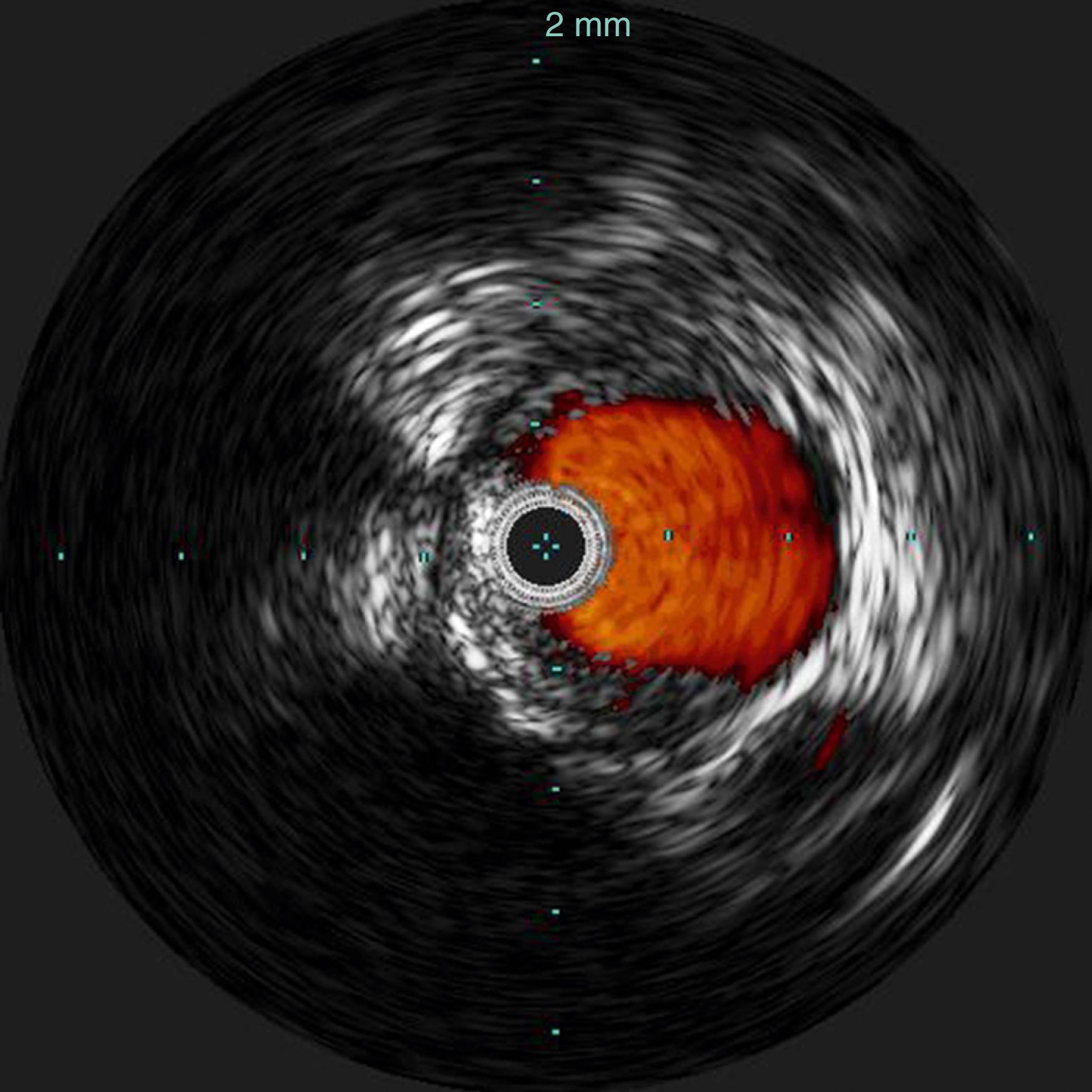Physical Address
304 North Cardinal St.
Dorchester Center, MA 02124
Catheter-based endovascular techniques are increasingly being used in vascular surgery, with demand for detailed intraoperative imaging increasing accordingly. Intravascular ultrasound (IVUS) is a catheter-based endoluminal guidance system that was initially utilized in interventional cardiology in the 1980s. Various trials and analyses of IVUS-guided versus angiographic-guided percutaneous coronary intervention (PCI) have concluded that IVUS-guided PCI results in similar or improved outcomes overall. In fact, IVUS has been shown to be effective in improving procedural results and reducing restenosis and the need for reintervention in PCI. Since its initial clinical use in coronary artery interventions, IVUS has been shown to have a variety of applications in vascular intervention because of its ability to provide detailed pretreatment diagnostic information on the extent and severity of disease, to guide treatment intraoperatively, and to immediately assess the treatment’s success.
IVUS creates axial images perpendicular to the long axis of the catheter by transmitting sound waves covering 360 degrees around the tip of the catheter, which is delivered into the lumen of the vessel over a guidewire. This is achieved either mechanically or electronically. The mechanical system, produced by Boston Scientific Corporation, utilizes a flexible high-torque catheter with a quickly rotating ultrasound transducer located at the tip. Electronic systems, produced by Volcano Corporation, utilize 64 miniaturized transducer elements located circumferentially around the tip of the catheter that are activated in sequence to produce an array of images. Information collected by IVUS transducers is reconstructed, displayed, and recorded visually on a separate console. This workstation facilitates the collection of measurements such as the diameter, circumference, and area of a vessel and allows for the capture of still images and video loops ( Fig. 32.1 ).

In working with IVUS, it is important to choose the appropriate catheters and ultrasound frequencies to obtain the best possible imaging. Higher frequencies improve image resolution but decrease the depth of penetration. This makes them ideal for smaller vessels, as they provide more detail, with probes delivering 45 MHz being well suited to coronary vessels. Probes with frequencies around 20 MHz are ideal for larger peripheral vessels or occlusive branched vessels, whereas probes with lower frequencies around 10 MHz are well suited for imaging vessels such the aorta, inferior vena cava, and iliacs ( Table 32.1 ). These catheters must be delivered with larger sheaths and provide less detail, but they can scan the entire circumference of a vessel.
| Catheter | Guidewire (in) | Frequency (MHz) | Sheath (F) | Working Length (cm) | Imaging Diameter (mm) | Manufacturer |
|---|---|---|---|---|---|---|
| Opticross | 0.018 | 30 | 6 | 135 | 12 | Boston Scientific |
| Eagle Eye Platinum | 0.014 | 20 | 5 | 150 | 20 | Volcano |
| Visions PV 014 | 0.014 | 20 | 5 | 150 | 20 | Volcano |
| Visions PV 018 | 0.018 | 20 | 6 | 135 | 24 | Volcano |
| Visions PV 035 | 0.035 | 10 | 8.5 | 90 | 60 | Volcano |
a In the United States, Boston Scientific Corporation and Volcano Corporation are the major manufacturers of FDA-cleared intravascular ultrasound (IVUS) systems.
As with other forms of ultrasound, IVUS displays two-dimensional images in gray scale. Ultrasound’s ability to penetrate the material and the resultant amplitude of the returning signal determine the relative brightness or darkness of the vessel wall, reflecting its echogenicity or echolucency, respectively ( Fig. 32.2 ). , It is also possible to visualize different types of plaques using IVUS. Heavily calcified plaques are highly echogenic and characterized by brightness and posterior shadowing. Fibrotic plaques are slightly less bright and lack the posterior shadowing of calcified plaques. Soft, lipid-filled plaques are echolucent and appear darker. Software allowing further characterization and analysis of vessels is also available with IVUS.

In order to overcome the limitations of two-dimensional visualization, three-dimensional IVUS has been developed to more accurately describe arterial morphology and atheroma distribution. Conventional methods have relied on a longitudinal reconstruction similar to an angiogram, created through an automated “pullback” of the IVUS probe and compiling a pixel-based two-dimensional longitudinal reconstruction. Because the catheter tip is not reliably in the center of the lumen, it is difficult to obtain accurate diameter and length measurements in longitudinal reconstructions. However, in recent years more sophisticated three-dimensional reconstruction algorithms have been developed, such as a novel method allowing for simultaneous registration of two IVUS pullbacks of the same vessel. This type of technology is likely to continue to improve, offering fewer errors in location and orientation registration.
It is also possible to characterize blood flow with IVUS using color-flow software. This software, such as Volcano’s ChromaFlo, compares adjacent frames at 30 frames per second and identifies the movement of blood cells, coloring any normal blood flow red and faster blood flow yellow. Unlike Doppler, color-flow IVUS cannot measure flow velocities. However, it does provide more information about the interface between the vessel wall and the bloodstream, allowing for more accurate volumetric measurements and the ability to assess completeness of treatment ( Fig. 32.3 and ![]() ). ,
). ,

Video 32.1 Color flow IVUS.
Virtual histology (VH) IVUS utilizes the frequency of the returned signal as well as its amplitude to produce a color-coded map of a lesion based on the different frequencies at which various tissues reflect ultrasound. This allows histopathologic analysis of plaques based on their composition ( Fig. 32.4 ). The Carotid Artery Plaque Virtual Histology Evaluation (CAPITAL) study, which compared 153 VH IVUS images with true histopathology sections from endarterectomies, found that VH IVUS was able to accurately diagnose 99.4% of thin-cap fibroatheromas, 96.1% of calcified thin-cap fibroatheromas, 85.9% of fibroatheromas, 85.5% of fibrocalcific plaques, 83.4% of pathologic intimal thickening, and 72.4% of calcified fibroatheromas. A 2013 study analyzing 276 atherosclerotic plaques also found that VH IVUS had high sensitivities for various types of plaques (87% for noncalcified thin-cap fibroatheromas, 92% for calcified thin-cap fibroatheromas, 85% for noncalcified fibroatheromas, 89% for calcified fibroatheromas, and 79% for pathologic intimal thickening). Although the accuracy of VH IVUS varies in identifying different types of plaque, it is overall able to provide insight into the morphology of lesions. The information about plaque composition offered by VH IVUS may improve outcomes by allowing physicians to predict plaque behavior in response to treatment, determining whether plaques may resist treatment or embolize when grafts or balloons are expanded. Histopathologic analysis using IVUS is currently available only for smaller vessels, since the maximum fields of display are less than 20 mm, but future advances in VH IVUS technology may improve plaque characterization in larger vessels.
As of 2009, the cost of IVUS systems were listed at between $100,000 and $200,000, while the disposable IVUS catheters cost between $600 and $1000 each. These can represent significant added costs to procedures. However, the benefits of using IVUS suggest that it is cost-effective, because increased effectiveness of treatment can prevent reintervention and improve morbidity/mortality rates, especially in complex cases. In a study examining the cost-effectiveness of IVUS in PCI, results demonstrated that use of IVUS was cost-effective, especially in patients at greater risk of restenosis, who benefit from more accurate stent implantation. Improved long-term clinical outcomes can certainly decrease costs, and IVUS has been shown to improve clinical outcomes in many studies. Studies of aortoiliac artery stenting found that clinical outcomes were improved with IVUS guidance. , Studies investigating peripheral and branch vessel stenting found that IVUS was able to detect unsatisfactory deployment of stents, allowing further measures to be taken immediately and preventing later reintervention. Similarly, IVUS-guided treatment of lower limb endovascular interventions was found to be predictive of lower post-procedural complications and significantly improved limb salvage rates. Overall, the benefits of IVUS use tend to outweigh additional procedural costs.
Become a Clinical Tree membership for Full access and enjoy Unlimited articles
If you are a member. Log in here